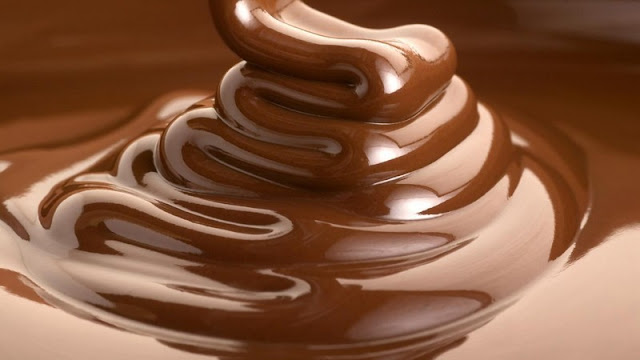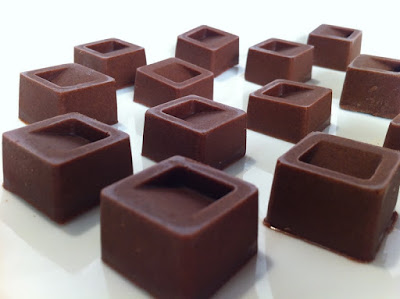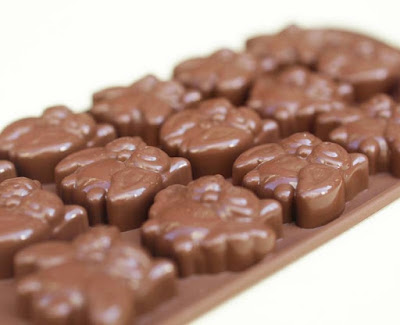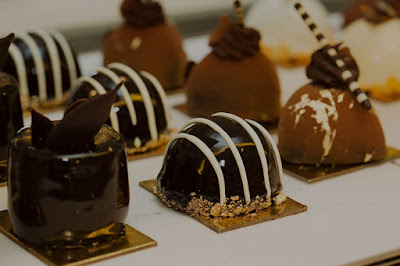It's easy to make impressive and delicious homemade chocolates for family and friends at Easter or anytime. You can buy Easter chocolate moulds in most speciality or discount stores and a variety of chocolate at your local supermarket. With a little time and patience, you'll soon be going fine handmade chocolates.
Types of chocolate:
Dark chocolate containing cocoa liquor, cocoa butter, sugar and vanilla. Milk chocolate contains the same ingredients as dark chocolate, but milk solids. It is softer, creamier, softer in texture and less intense than dark chocolate.
White chocolate does not contain cocoa butter, cocoa mixed only with sugar solids and milk flavours, such as vanilla. It is rich, creamy and sweet as milk chocolate.
Eating chocolate - dark, milk and white - can be used for cooking. dark varieties include bitter, semi-sweet and sweet. Dark chocolate has up to 80% of cocoa liquor and butter with a minimum amount of sugar. sweet chocolate has a higher proportion of vanilla sugar and cocoa butter.
Good quality chocolate cuisine can be found in the baking aisle of supermarkets. Cheaper to eat regular chocolate.
Cocoa butter has been replaced by fat or vegetable oil, making it easier to melt and climate, without quenching. It lacks the taste and texture of other chocolates but is perfect for cooking for children.
To melt chocolate:
Chocolate can be melted in several different ways, including oven, microwave or oven.
Stove Top - Place the chocolate in a bowl clean, dry and resistant to a heat of boiling water pot. Make sure no water or steam into the bowl of chocolate or could benefit. Stir constantly over medium-low heat until chocolate melts.
Microwave - Place the chocolate in a bowl clean, dry and microwave. Cook for 30 seconds, then stir again, continue until chocolate is melted.
Stove - Preheat oven to 160 C. Place the chocolate in a bowl clean, dry and heat resistant.
Tips for melting chocolate:
* Break chocolate into even sized pieces before melting.
* Use a metal spoon to stir the chocolate; wood spoons and plastic to retain moisture that can cause the chocolate to seize.
* Always use a metal, glass or ceramic bowl to melt the chocolate.
Make homemade chocolates:
1. Melt the chocolate (see above), then stir well to remove any lumps.
2. Pour the melted chocolate into moulds until they are filled up.
3. Tap the moulds with the fingers to remove the chocolate bubbles.
4. Allow chocolate to set hard.
5. Once your chocolates have completely set and hardened, carefully pop out of the mould.
6. Use a butter knife to cut the excess chocolate on the edges.
Tips for using chocolate moulds:
* Never wash chocolate moulds with water and soap. Simply wash with hot water. Water spots can also cause spots where the chocolate is not easily released from the mould.
* If your moulds are sticking, lightly coat them with a thin layer of vegetable oil.
Chocolate store:
Chocolate should be involved in alfoil and placed in an airtight container. Store in a cool, dry place, away from sunlight. In the closed state the chocolate has a shelf life of 12 months and open the chocolate, properly folded and stored has a lifespan of 3 months.
Chocolate Terms:
Avail - Chocolate benefit when small amounts of liquid mixed with it, it becomes a thick granular mass that can not be remelted and used.
Chocolate flowers - white spots that appear in the chocolate, the chocolate that must be heated and cooled very quickly.
Hardening - A technique used to stabilize chocolate with a high cocoa butter content through a process of melting and so the chocolate will become firm and clear cooling to room temperature.








0 komentar